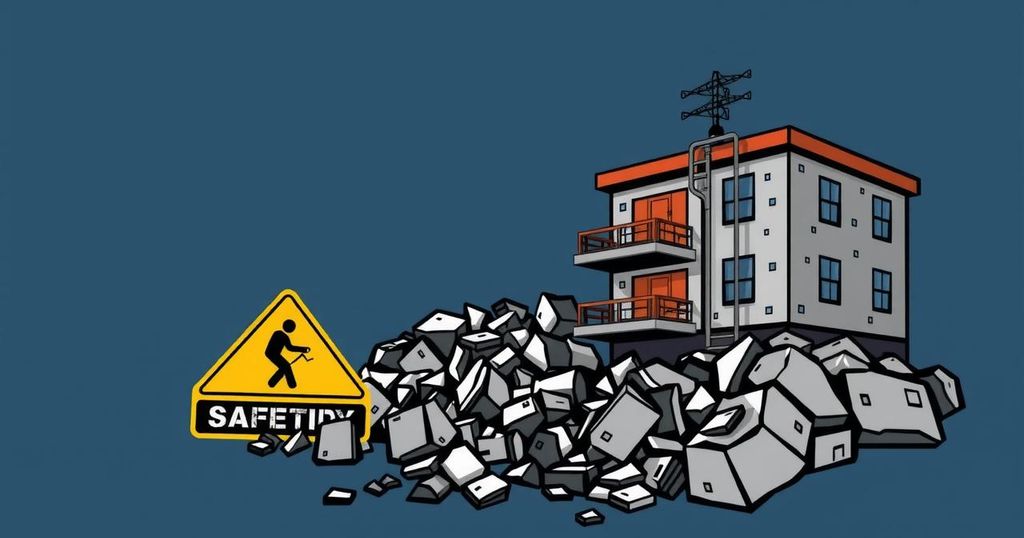A study by Intersec reveals heightened inquiries regarding earthquake preparedness from nations like the Philippines and the United States. Key discussions include the frequency of earthquakes in the Pacific Ring of Fire, the challenges of prediction, and safety protocols before, during, and after quakes. Japan’s IoT-based warning systems highlight advancements in alert technologies, providing crucial information for public safety.
Earthquakes represent one of the most destructive natural disasters faced globally, prompting individuals in various countries to seek guidance on how to adequately prepare for such events. A recent study by Intersec identified a high volume of earthquake-related inquiries across nations including the Philippines, the United States, India, Jamaica, the United Kingdom, and Australia. To assist the public, experts answered the most pressing questions regarding earthquake preparedness and safety measures.
A key query pertains to the geographical regions most affected by earthquakes. Approximately 90 percent of seismic events occur within the Pacific Ring of Fire, impacting primarily Japan, Indonesia, China, Iran, and Turkey. In addition, many are interested in whether earthquakes can be predicted. Despite advances in technology that allow for better analysis of seismic patterns, accurately forecasting the timing of an earthquake remains impractical due to the unpredictable behavior of tectonic plates. Nonetheless, the detection of P-waves—the less intense seismic waves anticipated before strong S-waves—facilitates rapid alert systems to warn citizens.
Japan exemplifies this proactive approach with its advanced earthquake warning systems, utilizing thousands of Internet of Things (IoT) sensors to detect fluctuations in seismic activity, thereby issuing immediate alerts when tremors cross a designated threshold. The integration of Early Warning Systems, especially in countries situated along the Pacific Rim, significantly enhances public safety preparations in advance of earthquakes.
Further inquiries arose regarding the types of earthquakes, particularly megathrust events, which occur at subduction zones and can reach magnitudes of 9.0 or higher. These catastrophic earthquakes predominantly arise in areas surrounding the Pacific and Indian Oceans, specifically within the Pacific Ring of Fire. Experts also provided essential advice on improving safety pre-, during, and post-earthquake.
Preparatory measures include securing heavy furniture to prevent injuries and planning evacuation routes while ensuring emergency materials are readily available. During an earthquake, individuals are advised to adhere to the principle of “Drop, Cover and Hold On,” avoiding proximity to windows and refraining from movement during the shaking. After the quake, it is critical to assess damages and injuries, deactivate utilities to mitigate further risks, and refrain from reentering compromised structures due to potential instability and aftershocks. Therefore, thorough pre-earthquake preparation is crucial, ensuring individuals possess adequate emergency supplies to weather various scenarios depending on the quake’s severity.
Earthquakes are a significant natural disaster that can cause widespread devastation and loss of life. Understanding how to respond during and after such events is critical for mitigating damage and ensuring public safety. Various countries, particularly those within earthquake-prone areas like the Pacific Ring of Fire, have recognized the importance of preparedness and prompt response to seismic activity. Recent data indicates a growing public interest in learning how to effectively face these challenges, highlighting the need for expert guidance and comprehensive safety protocols.
In summary, earthquakes pose a formidable threat, especially in regions like the Pacific Ring of Fire, where preparedness is essential for minimizing risks to life and property. Although predicting specific seismic events remains unattainable, advancements in warning systems and public education can significantly improve responses. It is incumbent upon individuals and communities to implement effective preemptive measures and to remain vigilant in the aftermath of an earthquake, thus ensuring safety and recovery efforts are maximized to cope with such natural disasters.
Original Source: www.si.com






